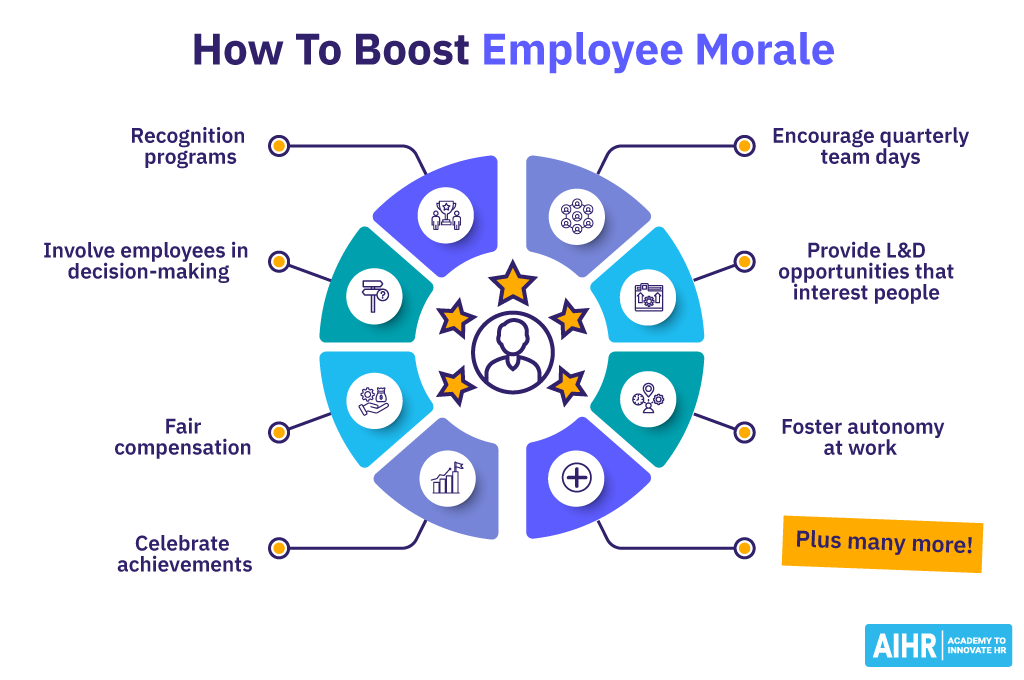Leadership today isn’t just about strategy and execution. Emotional intelligence has become a non-negotiable skill. Leaders are praised for their ability to connect, to listen, and to care. But while empathy is vital, there’s a darker side that too few recognize—toxic empathy. It’s a concept that quietly chips away at team performance and leadership clarity, all while disguising itself as kindness.
Defining Toxic Empathy
Empathy is a vital leadership skill—but like any strength, when taken to extremes or applied without balance, it can turn counterproductive. Toxic empathy occurs when a leader becomes overly enmeshed in the emotions of their team. Rather than guiding with clarity and compassion, they absorb emotional weight in a way that clouds judgment and stifles action.
When Caring Crosses a Line
It’s important to understand: toxic empathy doesn’t stem from apathy or neglect. In fact, the opposite is true. These leaders care deeply—so much so that their emotional concern begins to override their strategic responsibilities. They may internalize the struggles of their employees so intensely that it leads to paralysis or avoidance.
Emotional Entanglement vs. Emotional Intelligence
A key distinction must be made between emotional intelligence and emotional enmeshment. The former enables leaders to navigate complex dynamics with composure and understanding. The latter traps them in a cycle where they over-identify with every frustration, setback, or discomfort their team experiences. This blurs boundaries and often results in poor decisions driven by emotional guilt rather than clear, constructive leadership.
The Hidden Costs of Avoidance
A leader practicing toxic empathy might delay giving critical feedback out of fear of hurting someone’s feelings. They may avoid necessary conflict because they don’t want to upset the emotional balance of the group. In trying to protect feelings, they can inadvertently compromise performance, clarity, and long-term growth. Team members may end up confused, disengaged, or even resentful due to a lack of direction.
Compassion Without Compromise
According to statistics: Compromise is a method of resolving a disagreement where each party gives up part of what they want to reach a mutual agreement.
Healthy leadership requires empathy—but it also requires courage, accountability, and discernment. Leaders can care without becoming consumed. They can offer support while still setting clear expectations. Recognizing the signs of toxic empathy is a necessary step toward creating emotionally safe, but also high-functioning teams.
The Mask of Compassion
It’s easy to confuse toxic empathy with compassion. On the surface, they look alike. But while compassion empowers, toxic empathy enables. When a leader consistently puts emotional comfort over truth, teams begin to suffer. Accountability fades. Boundaries dissolve. The team dynamic shifts in unhealthy ways—and the leader doesn’t always see it happening.
Impact on Team Morale

Toxic empathy doesn’t foster trust—it fractures it. Team members notice when empathy becomes favoritism. When poor performance is repeatedly excused or rules are bent for certain individuals, resentment spreads. High performers feel overlooked. Others feel they’re walking on emotional eggshells. The environment grows heavy, cautious, and unclear.
When Leaders Carry Too Much
Leaders who absorb too much emotional weight often pay a high price. Emotional exhaustion, blurred priorities, and decision paralysis are all symptoms. When a leader is overwhelmed by the emotional burdens of the team, they lose the bandwidth to lead effectively. The result? A team adrift—and a leader burning out.
Empathy Without Boundaries
The key distinction between healthy and toxic empathy lies in boundaries. Leaders who over-identify with team struggles may silence their own instincts. They may avoid necessary course corrections or fail to challenge someone out of fear of being “too harsh.” But emotional honesty is often more caring than emotional sheltering.
Avoiding Hard Truths
Toxic empathy keeps leaders from delivering tough, but necessary, messages. Feedback becomes filtered. Performance reviews become sugar-coated. Instead of growing, team members remain stagnant. Avoiding discomfort may feel like protection, but it ultimately blocks development. Sometimes, the kindest thing a leader can do is speak the truth clearly and constructively.
Trust: The Antidote to Toxic Empathy

When leaders trust their team, they no longer feel the need to constantly cushion reality. They know their people are resilient. They believe in their team’s ability to grow through challenge. This trust allows for direct communication, honest feedback, and stronger relationships. Toxic empathy erodes trust; healthy empathy reinforces it.
A Culture of Avoidance
Toxic empathy doesn’t just affect individuals—it shapes culture. Teams led by overly empathetic leaders often become passive and reactive. Psychological safety is replaced by emotional fragility. Honest dialogue gets replaced by unspoken tension. A team culture that once felt caring now feels unclear and constrained.
Leadership Paralysis
Decisions delayed. Conflicts avoided. Boundaries blurred. These are the hallmarks of leadership hindered by toxic empathy. When every move is guided by emotional caution rather than strategic clarity, progress stalls. The team feels it. Momentum slows. Morale dips. Toxic empathy doesn’t just cloud judgment—it chokes it.
How to Shift Out of Toxic Empathy
Awareness is the first step. Notice when guilt, not clarity, is driving your decisions. Ask yourself if your empathy is empowering growth—or avoiding discomfort. Remember, leadership isn’t about shielding your team from every tough moment. It’s about guiding them through those moments with steadiness and care.
Be an Anchor, Not a Sponge
Leadership is as much about emotional intelligence as it is about decision-making. Yet, many well-intentioned leaders fall into the trap of absorbing every emotion around them—confusing empathy with emotional over-identification. While empathy is crucial, becoming a sponge for others’ emotions can drain your capacity to lead effectively. Instead, aim to be an emotional anchor.
The Pitfall of Absorbing Emotions
Leaders often feel compelled to take on the emotional burden of their teams. They think, “If I feel what they feel, I can support them better.” But this isn’t always true. Taking on every worry, fear, or frustration doesn’t make you more empathetic—it makes you overwhelmed. Over time, this emotional overload leads to burnout, blurred boundaries, and clouded judgment.
The Power of Emotional Anchoring
Anchoring is different. A healthy leader doesn’t absorb—they steady. When the emotional waters get rough, anchored leaders remain calm and clear-headed. They acknowledge their team’s feelings without being consumed by them. This steadiness creates a psychological safe space where others can process emotions without panic.
Being an emotional anchor means:
- Listening deeply without internalizing.
- Staying grounded in your own emotional state.
- Setting the tone for how challenges are handled.
- Creating room for others to express themselves without destabilizing the group.
Modeling Emotional Maturity
Your emotional posture as a leader teaches your team how to manage their own feelings. If you spiral with them, you reinforce instability. But if you stay centered and open, you model emotional resilience.
This doesn’t mean being stoic or detached. Anchored leaders feel—deeply—but with intention. They choose when and how to respond rather than react impulsively. This self-regulation sets a powerful example.
Why Your Team Needs You Steady
In times of uncertainty, your team will look to you for cues. Are we okay? Can I trust the direction we’re going? Your presence answers those questions, not just your words. If your emotions are swayed by every undercurrent, trust erodes. But if you remain steady—compassionate but composed—you inspire confidence and clarity.
How to Become an Emotional Anchor
Seek support outside your team. Use mentors or peer groups to process your own emotional load.
Check in with yourself regularly. Know what you’re feeling before taking on others’ emotions.
Practice healthy detachment. You can care without carrying.
Develop self-awareness. Notice when you’re absorbing too much and learn to pause.
Restore Team Health with Clear Empathy
Restore team health with clear empathy by leading with compassion and clarity. True empathy doesn’t blur boundaries or avoid hard truths—it creates space for understanding while upholding accountability. When team members feel heard and guided, trust deepens, stress decreases, and collaboration improves. Clear empathy fuels emotional safety without sacrificing direction.
Final Thoughts
Toxic empathy is a silent disruptor. It whispers, “Don’t rock the boat.” But strong leadership sometimes means making waves. If you want your team to thrive, lead with empathy—just not the kind that erases your strength. The most powerful empathy isn’t indulgent—it’s honest, intentional, and anchored in trust.
Andrea Balint is a writer and researcher focused on human behavior, workplace psychology, and personal growth. Through her work at CareersMomentum, she explores how mindset, leadership, and emotional intelligence shape modern careers. With a background in communication and HR development, she transforms complex ideas into practical insights that help readers build clarity, confidence, and professional purpose.
